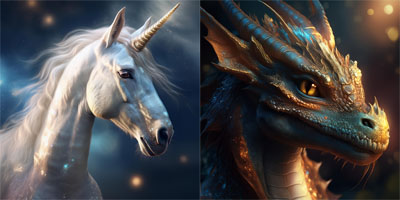Pegasi
1. Mythological Origins:
- Pegasus is the most famous winged horse in Greek mythology, known for his birth from the blood of Medusa. He is associated with deities such as Poseidon and Athena, and often symbolizes inspiration and creativity.
2. Characteristics:
- Appearance: Pegasi are generally depicted as white horses with long wings, symbols of beauty and grace.
- Powers: They have the ability to fly at extraordinary heights and are associated with celestial journeys and heroic adventures.
3. Cultural Representations:
- Pegasi appear in literary works, films, and anime, embodying the ideal of freedom and nobility. They are symbols used in various contexts, such as the logos of some universities and companies.
Dragons
1. Mythological Origins:
- Dragons are mythological creatures found in many cultures, from European to Asian. In the West, they are often seen as evil beings, while in the East they symbolize good fortune and wisdom.
2. Characteristics:
- Appearance: Western dragons are large reptiles with wings and the ability to breathe fire, while Eastern dragons are more serpentine and often associated with water.
- Intelligence: They are described as extremely intelligent and wise, capable of communicating and interacting with humans.
3. Symbolism:
- Dragons represent primordial forces of nature and are often seen as guardians of treasures or secret knowledge. In many cultures, they symbolize power, protection, and destruction.
4. Cultural Representations:
- Dragons appear in fantasy works such as "The Lord of the Rings" and "Game of Thrones," and are featured in video games and animated films.
Pegasi and Dragons in the Constellation of Pegasus
In the constellation of Pegasus, both Pegasi and images of dragons can be represented in various artistic and mythological interpretations. Although Pegasus represents the winged horse, the idea of dragons and other fantastic creatures is often present in the stories and legends surrounding this constellation, creating a connection between these two mythical figures.
 IT
IT  US
US  UK
UK  DE
DE  FR
FR  ES
ES  NL
NL  PL
PL  SE
SE  JP
JP 




